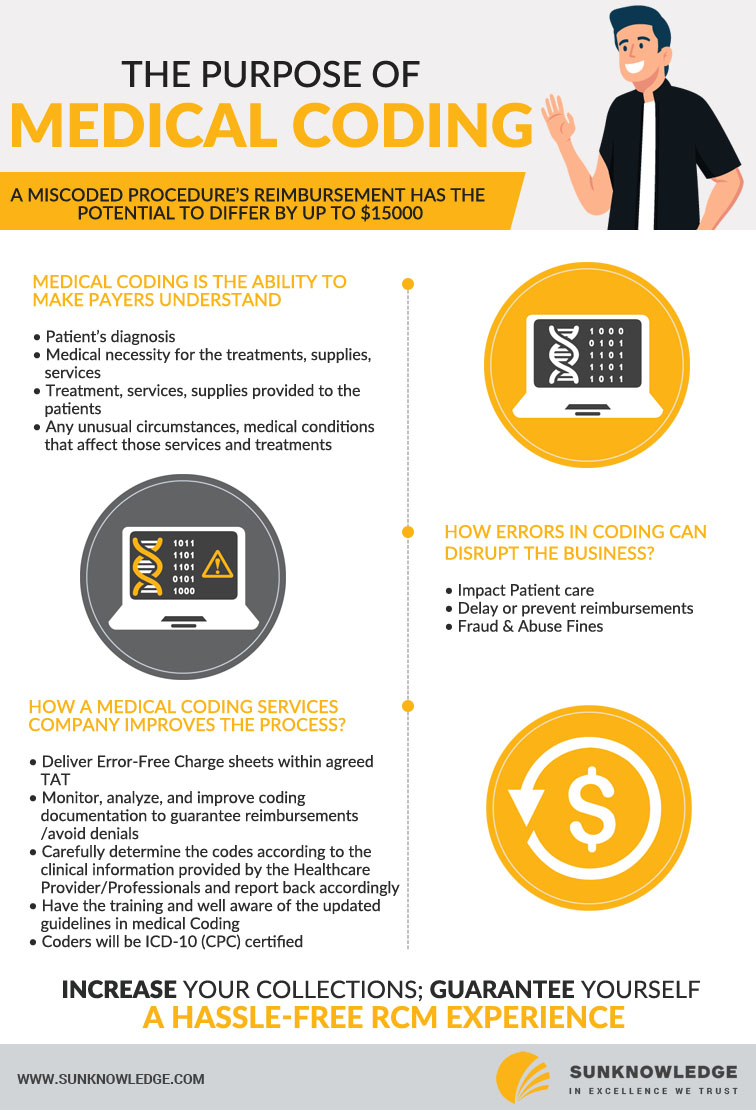- May 6, 2020
- Posted by: Thomas Anderson
- Category: Medical Coding

A study shows that the global medical coding market is expected to witness a growth at a CAGR of 10.15% from USD 12.29 billion to an estimated value of USD 26.63 billion by 2026.
Medical Coding allows uniform documentation between medical facilities. Government and health agencies’agencies’ jobs get more comfortable with consistent coding practices -having consistent data allows for efficient research and analysis. Taking the current scenario as an example, if the CDC wants to analyze the details of the coronavirus among affected patients, they can search for the number of recent coronavirus diagnoses by seeking for COVID–19 Coronavirus infection as specified in the ICD-10-CM code.
consistent coding practices -having consistent data allows for efficient research and analysis. Taking the current scenario as an example, if the CDC wants to analyze the details of the coronavirus among affected patients, they can search for the number of recent coronavirus diagnoses by seeking for COVID–19 Coronavirus infection as specified in the ICD-10-CM code.
Finally, Coding allows administrations to look at the prevalence and effectiveness of treatments in a particular facility or several healthcare facilities across the globe. Medical Coding is significant to large medical facilities like hospitals.
The U.S. currently uses ICD-10, which was launched nearly twenty years ago but has come into practice since October 2015. WHO released a version of ICD-11 in June 2018.
Medical Coding professionals refer to the medical record documentation and assign proper diagnoses and procedure codes, as per the guidelines of AAPC. They then proceed with an insurance claim, which indicates how much the insurer owes for the care and helps conclude how much the patient will be charged.
There are three sets of codes a medical needs to be aware of:
♦ ICD – The International Classification of Diseases or ICD codes.
♦ CPT – Current Procedure Terminology, or CPT, codes. These are used to document the majority of the medical procedures performed at a physician’s office. These codes are published and maintained by the AMA ( American Medical Association). These codes are updated annually.
♦HCPCS – Healthcare Common Procedure Coding System (HCPCS), popularly known as “hick picks,” are a set of codes based on CPT codes. But this only includes durable medical equipment, prosthetics, ambulance rides, and certain drugs and medicines.
In 2018, AMA found that the most common medical coding errors were un-bundling codes or employing repetitious contemporary procedural terminology codes for parts of a procedure, and up-coding.
Leave a Reply
You must be logged in to post a comment.
